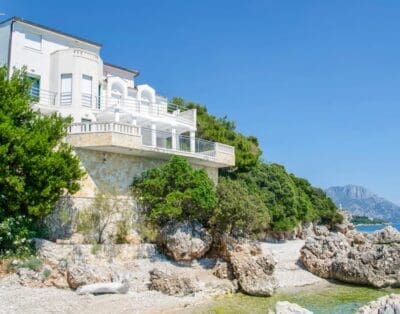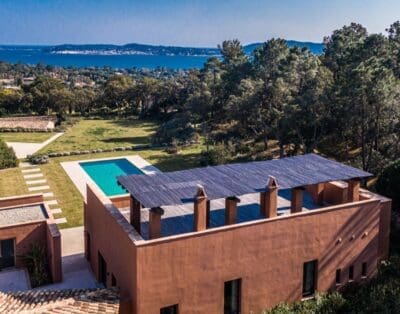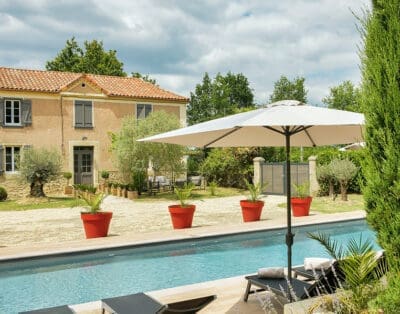Sailing Aboard a Work of Art: Wisp Yacht
True perfection is an extremely rare quality particularly in an object. I have come across it only once; a Ming Dynasty vase, one of a pair; they were made for the Imperial Palace, the owner bizarrely allowing me to handle it; magic. I checked out the British Museum’s world class collection and nothing matched the purity and appeal of those Ming vases. Near perfection which I assume takes into account an element of taste is also very rare; as a pure design as opposed to just a car is the Koenigsegg, the integrity of the design and the craftsmanship is sublime as is its performance. Royal Huisman’s ‘Wisp’ sailing yacht is right up there with the Koenigsegg car marque. Externally the yacht is a modern-classic with flowing, graceful lines whilst the interior does not have to make any apologies for being very modern, but oh so comfortable both as a living space and a sight to behold. She is built for speed (14 knots) as well as for a smooth ride and achieves at every level.
When you come across a yacht that has the same attention to detail as a bespoke watch with a quality that even a watchmaker would fully respect, it stops you in your tracks as superlatives really come into their own. I visited Roger W. Smith’s workshop on the Isle of Man, he and his team of ten people produce ten watches annually, his whole approach revolves around his obsession with quality. Shortly afterwards, I visited Royal Huisman’s yacht building yard in Holland where I found that same approach with their sailing and motor yachts.
Last summer I had a feast of viewings on Royal Huisman yachts; taking in the 90m. ‘Athena’; ‘Hanuman’; the replica of Endeavour ll, the ‘J’ Class Americas’ Cup yacht from the 1930s and then the very modern 57.5m. ‘Twizzle’. Other yards build fabulous yachts too but ….. Last autumn, to top it all, I was invited to sail aboard their new 48m. ‘Wisp’.
It would be a personal indulgence to describe the minutiae of the detailing despite being fully justified by the quality of the design and craftsmanship. Photographs just cannot capture the moment as it is the overall effect that counts.
The ingredients in achieving the overall success of Wisp are; an owner who has a passion for the project which is matched by the means to achieve his goals; an architect who interprets the owner’s wishes (normally including getting a quart into a pint pot amongst other whims) and takes a pride in following the brief of the owner. In this case, the naval architect Andre Hoek (Hoek Design) suggested building the yacht at Royal Huisman. Then we turn to the interior designers (Rhoades Young Design) whose work would be foremost in many people’s initial overall impression of the readily perceived success of the project. Representing the owner in the project was MCM of Newport managing the project on his behalf. Last but not least, the five parties obviously had a common bond and worked extremely well together to produce a modern classic high performance cruising yacht (racing was nevertheless still on the agenda) which delivered a comfortable ride.
The mix of modern and classic sloop is blurred as the exterior lines are certainly harping back to the era when the flow of lines was at its zenith. The bow overhang is both long and elegant with a stern that complements, together with the deepest of under-cuts on a 48m. yacht, overall, the waterline length is reduced to 33m. The superstructure is low-built which completes the classic look; everything else is modern in both interior design as well as in exploiting the latest technology.
Quite reasonably, I would have expected the fundamental compromise of following the classic lines to leave the volumes of the interior to reflect the 33m. waterline length. How they have created a spacious and light interior is remarkable, particularly bearing in mind the demands on space of the engineering aspects. In addition, to keep noise levels to an absolute minimum, the extensive ducting for both engines and air conditioning has to be large in volume. It had to be repeated to me that working up the interior design had taken a full eight man/years plus another year in supervising the installation. Regardless of the cost, it was time well spent. They exploited every opportunity to optimise space, for example, they identified a wall space of a depth of 10 cm. that could be used. It was just deep enough to build in a cupboard for the slimmer white wine glasses. Still on wine; there is an ottoman with a tray inset on top in the main saloon, under the tray is enough storage capacity for a dozen or so bottles of wine.
The daytime guest accommodation walls are mainly covered in wood panelling, a light coloured, tightly grained oak with very consistent figuring and colour is used. You could anticipate that is doubtless rare; it only found in a small corner of Germany. Mischievously, I asked where the fresh but subtle green saloon carpet came from: Nepal, effectively every fitting and artefact is bespoke as this is a very personal display of refined but a very practical yachting experience.
To follow through with the clean uncluttered lines, instead of have fielded panels, parallel pencil line thickness inlays are used. Look closely and, frequently one of those inlays is actually a gap of exactly the same width as the adjacent inlay. There can be no better way to hide numerous but easily accessible cupboards.
The layout, starting from the stern comprises the very spacious owners’ quarters stretching across the full beam of the yacht. Just aft of the en-suite (the bathroom lacks for nothing) is a private sitting area plus a commodious walk-in wardrobe. A few steps up is a door leading to a private alfresco sitting area shielded from everyone’s gaze and weather alike by a ‘pram hood’ canvas awning.
There are two en-suite guest cabins forward of the owner’s quarters, a double and a twin. The linking, central passageway leads forward to the saloon. Simply relax or fold back a built-in table top and all the navigational equipment comes into view; a ‘Techie’s’ dream come true. There is still more guest accommodation to come as there is a dining room plus a further smaller sitting area alongside.
A good yacht needs generous space for the galley, other services and storage plus crew quarters, so all the accommodation forward is thus dedicated to the running of the yacht. Fine dining is increasingly a major part of the enjoyment on board yachts so galleys have increased in size and sophistication in recent years to attract ever more highly skilled chefs; we much appreciated the flow of dishes from below decks as we sat in the alfresco deck saloon.
The crew quarters have not been stinted; where appropriate, the wall finishes, similar to the guest quarters have panels of fine textiles including silks and linens which are pieces of art in their own right.
Larger yachts have enough space for the crew to have separate access for moving forward and aft without venturing in to the guest accommodation; quite where they conjured up enough space to provide that privacy on Wisp is a marvel.
Venturing on deck, there is still more guests’ day accommodation. There is a ‘halfway house’ in the form of a vast deck saloon under a canvas awning; cleverly, the design approach has been to create a nautical feel about it. It is less formal than the main saloon below, I expect the guests would spend much time here whether they are simply wearing swimming costumes or casually dressed for an alfresco meal.
The actual sailing is controlled immediately aft of the deck saloon, the cockpit for best vision and comfort has a wheel on each side. Guests, who are welcomed to helm and get involved in the joy of driving the yacht, can still join in the social whirl whilst steering. There is ample uncluttered deck space for sunbathing or under cover to watch the world go by or to read. The more energetic amongst us will appreciate the range of ‘toys’ now carried on all yachts these days.
The sailing experience was simply an extension of the elegance of the yacht; the crew adeptly handled everything with aplomb, the engine noise was very muted as we manoeuvred and then motored out into clear water until we found the regrettably rather light winds. It was inevitable; the day before they had brisk winds for a great sail topping 15 knots. Nevertheless on our trip the vast sails of the cutter rig filled as the skipper found wind to turn off the engine, and we then enjoyed a leisurely but nevertheless enjoyable sail.
It is important that there are people who can push the boundaries of achievements in quality and technology at all levels. A neglected aspect on these high status projects is the number of jobs they create and maintain in both the building process and ongoing operations. In addition, the job satisfaction by the teams involved in these projects gives them a great style of life.
Yacht Builder: www.royalhuisman.com
Naval Architect: www.hoekdesign.com
Interior Designers: www.rhoadesyoung.com
Owner’s Project Managers: www.mcmnewport.com
Travel Insurance: www.mpibrokers.com
Wisp Yacht photographs by Carlo Baroncini and Cory Silken.








